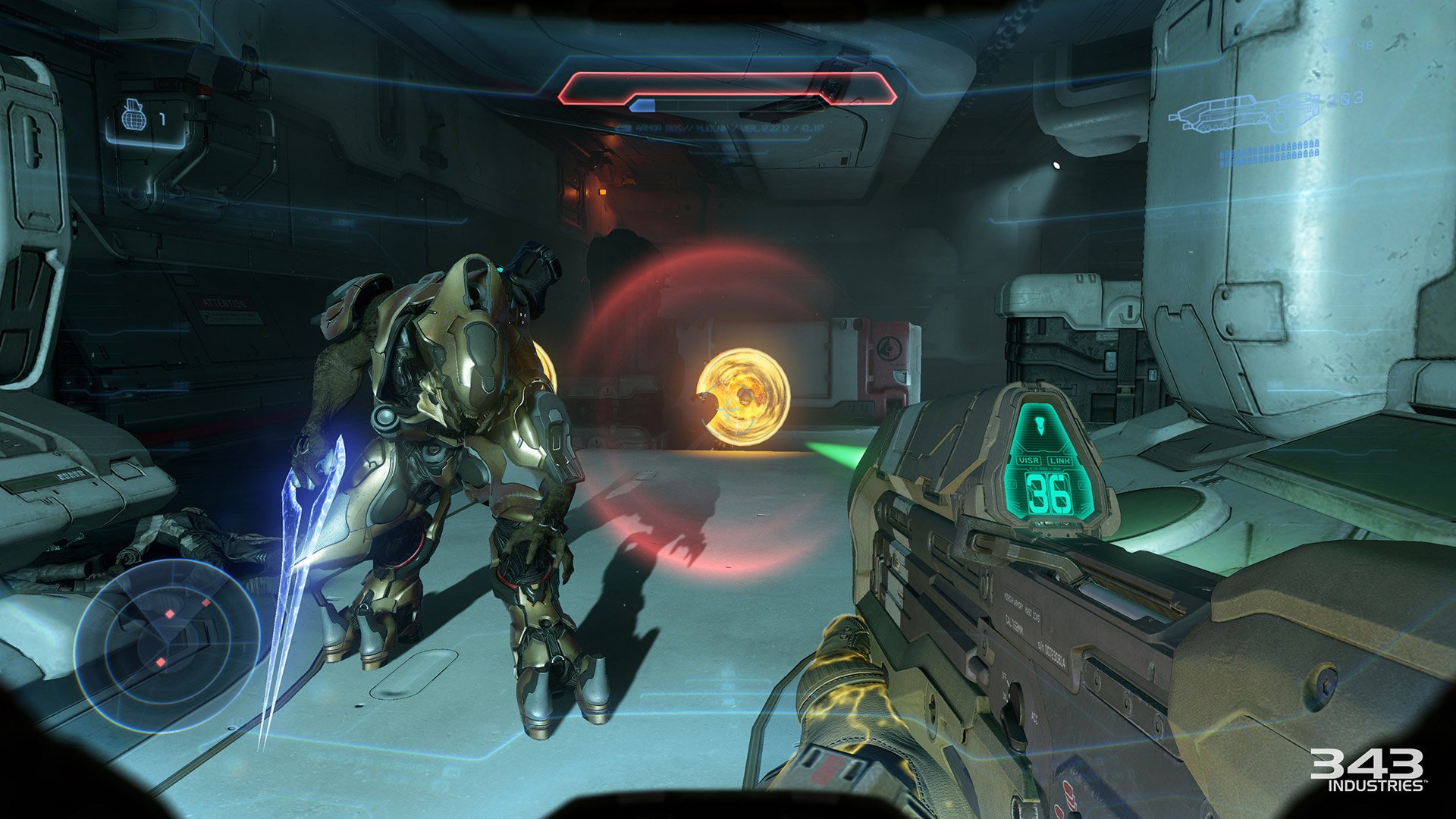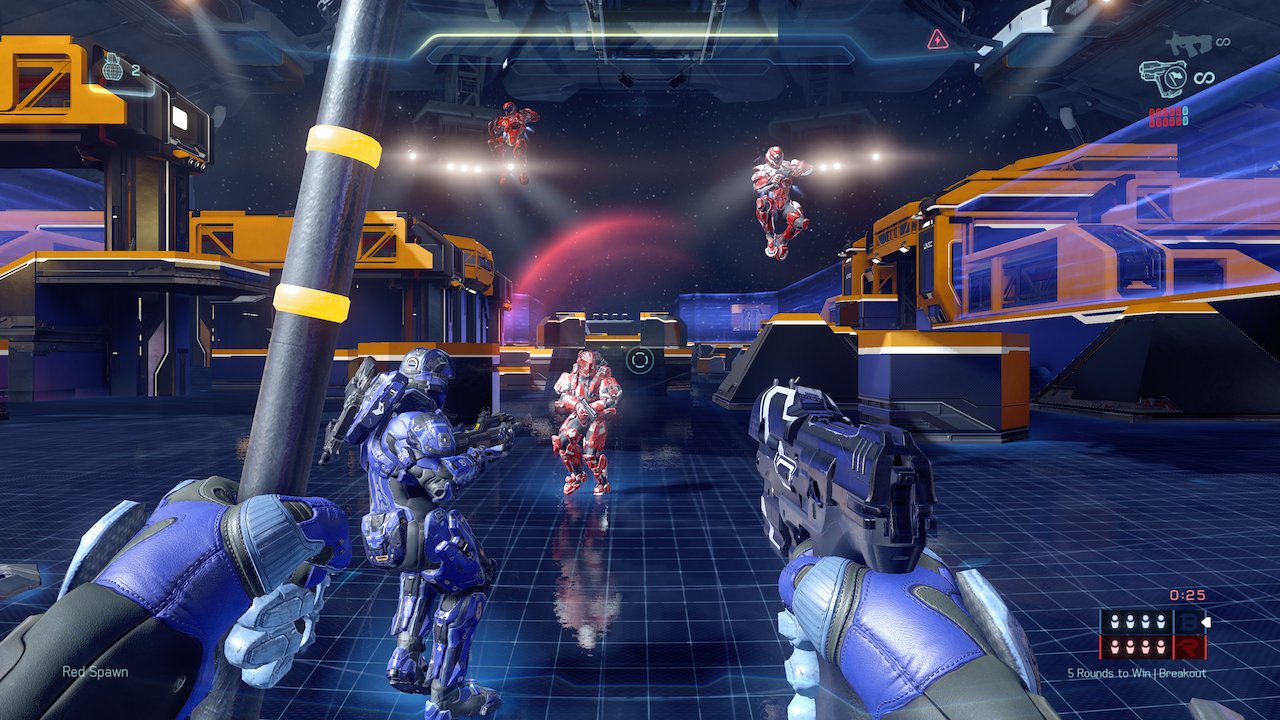Halo 5 review
Be warned, dear reader: this review contains spoilers for Halo 5 (and possibly its predecessors). As a long-time and avid fan of the Halo universe, I can’t review this game without taking a look at the lore. And since it’s the fifth title in a series… Well, I’m sure you understand.
Also, this has expanded from a review into more of an editorial. Buckle up.
A course correction
The Halo franchise has a long and storied history, and 2015’s entry saw developer 343 Industries finally step forward to make the series their own. When 343 Industries (or “343i”) adopted the Master Chief, Cortana, and The Covenant from Bungie in 2011, the studio chose to take the series in a new direction.
I’ll address the broader implications of this decision later. In the case of Halo 5 specifically, 343i incorporated things like squad-focused gameplay, aim-down sights, and faster movement speed/traversal. (Additionally, the game’s creative director, Tim Longo, worked on Star Wars: Republic Commando—one of my most cherished games of all time.)
As you might imagine, every article I read or video I watched only added fuel to my personal hype train.
The result, however, is a flawed—but impressive—game that feels more like Titanfall 2 than a proper Halo experience. In fact, I’d argue that other (see: rival) studios delivered better “Halo-ish” games in the past calendar year.
But before I dive further into the details, let me start at the beginning.
A cosmic legacy
Only a few video game series and/or characters can be described as “tentpoles” of the industry. Pac-Man, Sonic, and Mario oversaw the early years of gaming. And the 90s belonged to The Legend of Zelda, Final Fantasy, and Pokémon.
Since the mid-2000s, the most internationally-recognized series have been Call of Duty, Grand Theft Auto, and Halo. And only one of them includes multiple games built around a consistent narrative and an unparalleled FPS multiplayer battleground.
In 2001, Halo: Combat Evolved revolutionized gaming by luring first-person shooters away from PC to a new home on consoles. Halo 2’s back still hurts from carrying Xbox Live through the platform’s early years. (The game’s multiplayer forced Microsoft to establish a digital marketplace and connectivity system that would pioneer similar services across all platforms.) And Halo 3…well, I could go on and on. Each game brought something unique to the series, and gaming as a whole.
343i has done a lot of things right since 2011. They’ve incorporated the extended universe (in terms of narrative fiction and graphic novels) with surprising tenacity. And their dedication to the content and stories within the Haloverse surpasses anything but Star Wars, Star Trek, Marvel, and DC Comics. You could argue that Halo incorporates those mediums just as successfully as its media-juggernaut counterparts.
A renewed focus
Within the Halo game franchise, 343i wrote Halo 4 and Halo 5 to humanize characters, from the no-longer-robotic Master Chief to the increasingly-unstable Cortana. They branded the series’ multiplayer mode as “War Games”—a stroke of genius that wrapped the traditional Spartan-on-Spartan combat into the overall narrative without breaking cohesion. And, as much as purists complain, Halo 5’s focus on mobility and fast, agile combat propelled the series back to the forefront of the competitive eSports conversation.
Clearly, Halo 5 is a difficult experience to review. So much so, in fact, that I never intended to write this. I played the game on the day it launched, well before this site existed. And once I’d finished the campaign and invested a few dozen hours into multiplayer, I was more than happy to retire the game.
But during my cousin’s visit last year, I offered to let him play through Halo 5. That choice resulted in dozens of conversations, which in turn re-stoked the fires of my opinion about the game.
You see, my cousin and I are both avid fans of the Haloverse, having read most of the books and also discussed the lore on multiple occasions. Halo’s been a passion of mine since my first LAN party (with my dad’s friends, actually) when I was in middle school. In fact, I’ve been an ambassador for the series over the years, introducing friends and family to the industry’s premier FPS series.
I think it’s safe to say you understand my struggle now: the longtime Halo gamer (and reader) in me cringes at the thought of the review I must write, but I’ve never been one to beat around the bush…
Spectacle over substance
Tonally and thematically, Halo 5 builds upon the emotional conclusion of Halo 4. Cortana (who spent something like 40 years living inside the Master Chief’s brain) is dead, having sacrificed herself to protect him. Their relationship is intimate and awkward... But it's also the only aspect of “normalcy” in the life of a universe-saving supersoldier. (Kind of ironic, really.)
And then Cortana sacrifices herself to save him.
It makes sense, then, why Chief would be willing to go AWOL when he believes that Cortana is back, active somewhere called “Meridian.” Only this time, the Master Chief doesn’t have to face this task alone.
Similar to Halo 2, Halo 5 incorporates dual storylines. Players spend time with Blue Team, which (for fans of the books) is the stuff of dreams. I’ve wanted to see this group in action since The Fall of Reach was published in 2001. So, yes, I loved finally seeing Chief stand alongside Fred, Linda, and Kelly, members of the class of Spartan-II recruits he trained with as a child—his brother and sisters, if you will.
A new kind of hero
Meanwhile, Spartan Locke (of “Halo: Nightfall” fame) leads a team of his own, one consisting of heroes both old and new. Team Osiris is tasked with pursuing the legendary AWOL Spartan-IIs, and I believe a quote will accurately summarize the huge impact their mission will have on the Haloverse:
"Every other Spartan, every soldier—when they hear about this, they’re gonna hate us. You know that, right?"
You don’t hunt down humanity’s galaxy-saving, recruitment-poster hero and expect to come home unscathed.
Let me jump ahead a moment and say that the “team” aspect is an excellent addition to the Halo franchise. It isn’t without mechanical flaws, of course—it is the first iteration, after all. But the camaraderie and interactions help carry a narrative that is confusing and lacking in many other aspects.
The relationships also allow co-op experiences to be truly team-centric... Which is especially ironic given that there’s no more couch co-op—a first in Halo’s long and storied history.
(That trade-off is far from balanced, by the way.)
Rewriting the handbook
Gameplay helps soothe that wound, though, because Halo 5 is a feast for the senses. Controller/gunfire feedback is excellent, the completely redesigned audio packs a different-yet-familiar punch.
The graphics really do set a new benchmark for games on Xbox One. As always, first-party developers know their system, inside and out, and it shows very well in this game. A lot of things might have changed over the past 15 years of Halo, but graphical (and audio) excellence isn’t one of them.
Speaking of changes, the mechanics feel very different. There’s no doubt that Halo 5 was influenced by Titanfall, or even the fluid combat of Destiny. Mantling over objects, sliding into cover, aim-down sights, and a stronger focus on Halo 4’s thruster pack—all of these pieces became core gameplay components.
Player success (whether in the campaign or online) is often decided by mobility and situational awareness. The combat is faster and more frantic than ever before, and that rejuvenated the community in a way that the singleplayer experience failed to do.
Halo 5’s multiplayer is the definitive Halo multiplayer experience on Xbox One, and I would argue the best the series has felt since Halo 3, if not ever. 343i has also been consistent with multiplayer DLC, providing a steady stream of new maps, modes, weapons, and vehicles—all for free. I can’t say that this wipes the rest of the slate clean, but it’s tempting to overlook some of the flaws in light of the developer's passion.
I still have hope for the future, and trust that 343i will continue to deliver more (and better) Halo experiences.
In a nutshell
343 Industries dared to overhaul the direction of the Halo series, and while many aspects of that shift succeed, some fall flat. On one hand, Halo 5 fails to incorporate the bountiful lore that has been added through the extended universe; instead, the game delivers a tepid (and sometimes baffling) story full of frustratingly shallow character interactions. On the other hand, 343i set out to rejuvenate fans’ adoration for Halo multiplayer, and they keep up their end of the bargain with regular improvements to an already-excellent competitive experience. And on my imaginary third hand (!!?), 343i finally gave me the squad-based Blue Team experience I’ve always wanted.
If you’re only interested in the Halo story, this isn’t the game you’ve been looking for. If you’re interested in the unmatched multiplayer, then what are you waiting for? You’re missing out on over a year’s worth of free content updates. Put down your other FPS games and get back in the fight, Spartan.
Pros
+ Courage to innovate
+ Visually stunning
+ Superb multiplayer
+ Continued support
Cons
- Flat characters
- Confusing story





